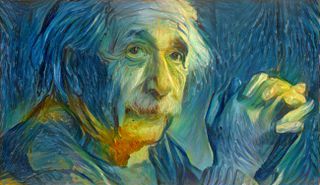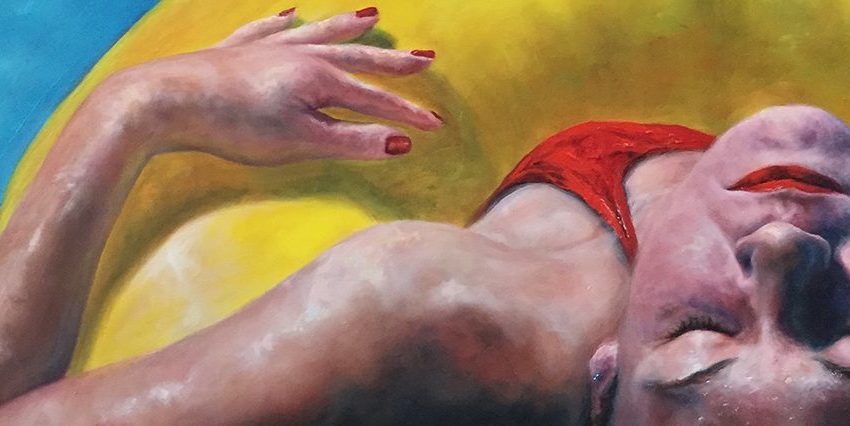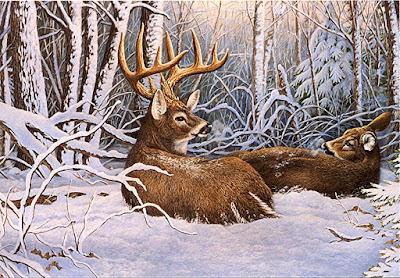
The market for Chinese contemporary art has actually established at a feverish rate, ending up being the solitary fastest-growing segment of the global art market. Given that 2004, costs for works by Chinese contemporary musicians have enhanced by 2,000 percent or more, with paintings that once sold for under $50,000 currently bringing amounts over $1 million. Nowhere has this boom been felt more appreciably than in China, where it has spawned enormous gallery districts, 1,600 public auction homes, as well as the first generation of Chinese contemporary-art collectors.
This trend for Chinese contemporary art has actually also generated a wave of criticism. There are costs that Chinese enthusiasts are utilizing mainland auction houses to increase rates as well as take part in prevalent supposition, as if they were trading in supplies or realty. Western collectors are likewise being implicated of supposition, by musicians who claim they get jobs affordable and then market them for 10 times the original prices-and sometimes more.
Those that entered this market in the past three years located Chinese modern art to be a surefire bet as prices increased with each sale. Sotheby’s very first New York sale of Asian contemporary art, controlled by Chinese artists, brought an overall of $13 million in March 2006; the exact same sale this previous March amassed $23 million, as well as Sotheby’s Hong Kong sale of Chinese contemporary art in April totaled nearly $34 million. Christie’s Hong Kong has actually had sales of Asian modern art since 2004. Its 2005 sales total of $11 million was dwarfed by the $40.7 million overall from a solitary night sale in May of this year.
These figures, remarkable as they are, do not start to share the astounding success at public auction of a handful of Chinese artists: Zhang Xiaogang, Yue Minjun, Cai Guo-Qiang, Liu Xiaodong, and also Liu Ye. The leader this year was Zeng Fanzhi, whose Mask Series No. 6 (1996) cost $9.6 million, a record for Chinese modern art, at Christie’s Hong Kong in Might.
Zhang Xiaogang, that paints big, morose faces evocative family members photos taken during the Cultural Change, has actually seen his document rise from $76,000 in 2003, when his oil paints initially appeared at Christie’s Hong Kong, to $2.3 million in November 2006, to $6.1 million in April of this year.
Gunpowder drawings by Cai Guo-Qiang, that was just recently provided a retrospective at the Guggenheim Museum in New York, cost well below $500,000 in 2006; a suite of 14 jobs brought $9.5 million last November.
According to the Art Price Index, Chinese artists took 35 of the leading 100 prices for living contemporary musicians at public auction last year, equaling Jeff Koons, Damien Hirst, as well as a host of Western musicians.
” Everybody is seeking to the East and also to China, and also the art market isn’t any type of various,” says Kevin Ching, CEO of Sotheby’s Asia. “Notwithstanding the subprime crisis in the U.S. or the fact that several of the other monetary markets appear tense, the overall organisation area still has great confidence in China, reinforced by the Olympics and the World Exposition in Shanghai in 2010.”
There are signs, nevertheless, that the worldwide market for Chinese art is beginning to reduce. At Sotheby’s Eastern contemporary-art sale in March, 20 percent of the lots offered discovered no customers, as well as even works by leading record-setters such as Zhang Xiaogang hardly made their reduced price quotes. “The market is obtaining mature, so we can not sell every little thing anymore,” states Xiaoming Zhang, Chinese contemporary-art professional at Sotheby’s New York. “The enthusiasts have actually become truly smart as well as only concentrate on specific musicians, particular periods, particular material.”
For their component, Western galleries are excitedly pursuing Chinese artists, most of whom were unidentified simply a few years ago. Zeng Fanzhi, for instance, has actually been authorized by Acquavella Galleries in New York City, in a two-year bargain that exceeds $20 million, according to a Beijing gallerist near the arrangements; William Acquavella decreased to comment. Zhang Xiaogang and Zhang Huan have actually joined PaceWildenstein, as well as Ai Weiwei and also Liu Xiaodong showed with Mary Boone last springtime. Practically every major New york city gallery has actually recently joined a Chinese musician: Yan Pei Ming at David Zwirner, Xu Zhen at James Cohan, Huang Yong Sound at Gladstone, Yang Fudong at Marian Goodman, Liu Ye at Sperone Westwater. Their works are entering exclusive and also public collections that until now have disappointed any type of specific rate of interest in Asian modern art.
” The market hasn’t acted as I anticipated,” claims New york city supplier Max Protetch, who has been representing artists from China because 1996. “Most of us anticipated that the Chinese musicians would experience the exact same critical process that happens with art anywhere else in the world. I presumed that some musicians would fall by the wayside, which has not held true. They all have come to be elevated. It looks like an uncritical market.”
One of the key musicians buoyed by this success is Zeng Fanzhi, who is best understood for his “Mask” collection. 5 years ago his works sold for under $50,000. Today he commands rates on the primary market closer to $1 million, with significant collection agencies Charles Saatchi and also Jose Mugrabi among his followers. Now planning for his very first solo program at Acquavella in December, he is taken into consideration among the much more significant artists on the Beijing scene since he works alone, without the horde of aides found in most other artists’ studios in China. Still, his lifestyle is typical of that of his equally effective peers. When asked if he has a massive black Hummer parked outside his workshop, he addresses, “No, that’s an ugly car. I have a G5 Benz.”
This success has progressed under the watchful eye of the Chinese federal government. Motion pictures, television, as well as news organizations are strictly censored, yet on the whole, the visual arts are not. Despite sporadic incidents of exhibitions being shut or personalizeds authorities seizing art work, by and large the federal government has sustained the growth of an art market as well as has actually not interfered with exclusive activity. In the 798 gallery district in Beijing, a Bauhaus-style former munitions complicated that has actually been transformed into the capital’s most popular art center, with greater than 150 galleries, one locates jobs addressing destitution and various other social issues, main corruption, and also brand-new sexual mores. The symbols of the previous China-happy workers and peasants and also brave soldiers increasing the red banner-are treated with irony, if in any way, by the musicians whose jobs get on sight in these galleries, which are private locations generally not under the stringent control of the Ministry of Culture.
On the eve of the Olympics, however, the federal government asked one gallery to delay an exhibition till after the games. Thought about inappropriate was “Touch,” a program by Ma Baozhong at the Xin Beijing Gallery of 15 paints illustrating important minutes in Chinese background, including one based upon a photo revealing Mao Zedong with the Dalai Lama as well as the Panchen Lama in 1954.
The Beijing municipality invested huge funds to restore the 798 district prior to the Olympics, putting in new cobblestone roads and lining its major highway with cafés. Shanghai, which has benefited much less from government support, now flaunts at least 100 galleries. Local governments throughout the country are establishing SoHo-style gallery areas to improve tourism.
A single person who appears positive concerning the future of the Chinese market is Arne Glimcher, creator as well as president of PaceWildenstein, that opened a branch of his gallery in Beijing in August. Located in a 22,000-square-foot cement room with soaring ceilings, upgraded at an expense of $20 million by engineer Richard Gluckman, the gallery remains in the center of the 798 area. “We are devoted to the art, and we wanted to open a gallery where our musicians are,” claims Glimcher. Including that he usually shuns the “McGallery” fad of establishing satellite rooms around the world, Glimcher firmly insists that it was needed to establish a branch in Beijing since there is “no local gallery of our quality” with which Rate can companion. He has, nevertheless, recruited Leng Lin, creator of Beijing Commune, one more gallery operating in 798, to be his supervisor.
Another Western dealer who has actually taken the China plunge is Arthur Solway, who just recently opened a branch of James Cohan in Shanghai. “I began coming to China five years earlier, as well as I was fascinated by the power,” states Solway, who intended to introduce gallery artists like Bill Viola, Wim Wenders, as well as Roxy Paine to Asia but, like Glimcher, might not discover a public gallery or private gallery that he thought about expertly qualified to handle such exhibits. James Cohan Gallery Shanghai is located on the ground floor of a 1936 Art Deco structure in the French Concession, a particularly attractive area of the city. The building was as soon as occupied by the army, and also red Chinese personalities over the front door still exhort, “Allow the spirit of Mao Zedong flourish for 10,000 years.”
“From 1966 to 1976, throughout the Cultural Revolution, individuals had nothing, but now there are health spas in Shanghai and people drinking cappuccinos and acquiring Rolex watches-it’s an incredible sensation,” states Solway, that believes it is just a matter of time before these same freshly wealthy customers start to accumulate modern art.
Chinese collectors-or the hope that there will certainly be Chinese collectors-are the vital draw enticing these galleries to Beijing. As recently as 2 years ago, couple of could call also a solitary Chinese collector of modern art. It was a truism that the Chinese chosen to spend their money getting classical times as well as timeless jobs. Since then a number of well-known landmass enthusiasts have arised on the scene.
The majority of visible is Guan Yi, the affable, well-dressed beneficiary to a chemical-engineering ton of money, who has actually set up a museum-quality collection of greater than 500 jobs. A significant lender to the Huang Yong Ping retrospective arranged by the Walker Art Center in Minneapolis in 2005, he on a regular basis amuses museum trustees from around the globe, who make the expedition to his stockroom on the outskirts of Beijing. Currently he is developing his own museum.
Another kept in mind number is Zhang Lan, head of the South Charm chain of Szechuan-style dining establishments throughout China; she also has actually put together an excellent collection as well as shows pieces from it in her trendy establishments. The film actress Zhang Ziyi is agent of a brand-new class of collection agencies from the show business, while Pan Shiyi as well as Zhang Xin, chairman and Chief Executive Officer of the massive SOHO China property realm, have actually commissioned tasks for their upscale houses.
Two enthusiasts who are cheerleaders for the Beijing art scene are Yang Container, an automobile-franchise magnate, as well as Zhang Rui, a telecommunications executive who is additionally the backer of Beijing Art Now Gallery, which took part in Art Basel in June, one of the very first Beijing galleries to show up at the reasonable. These two do more than accumulate art. They have organized suppers for prospective collectors, arranged trips to Art Basel Miami Coastline, as well as brought good friends with them to sales in London and also New York. Zhang Rui, who has more than 500 works, has actually offered art to global events, most especially the installation Tomorrow, which features four “dead Beatles” mannequins floating facedown, developed by musicians Sun Yuan as well as Peng Yu for the 2006 Liverpool Biennial, which declined it.
Zhang is currently developing an art hotel, including particularly commissioned works and also artist-designed rooms, outside the Workers’ Stadium in the facility of Beijing. “I am …
Continue reading

